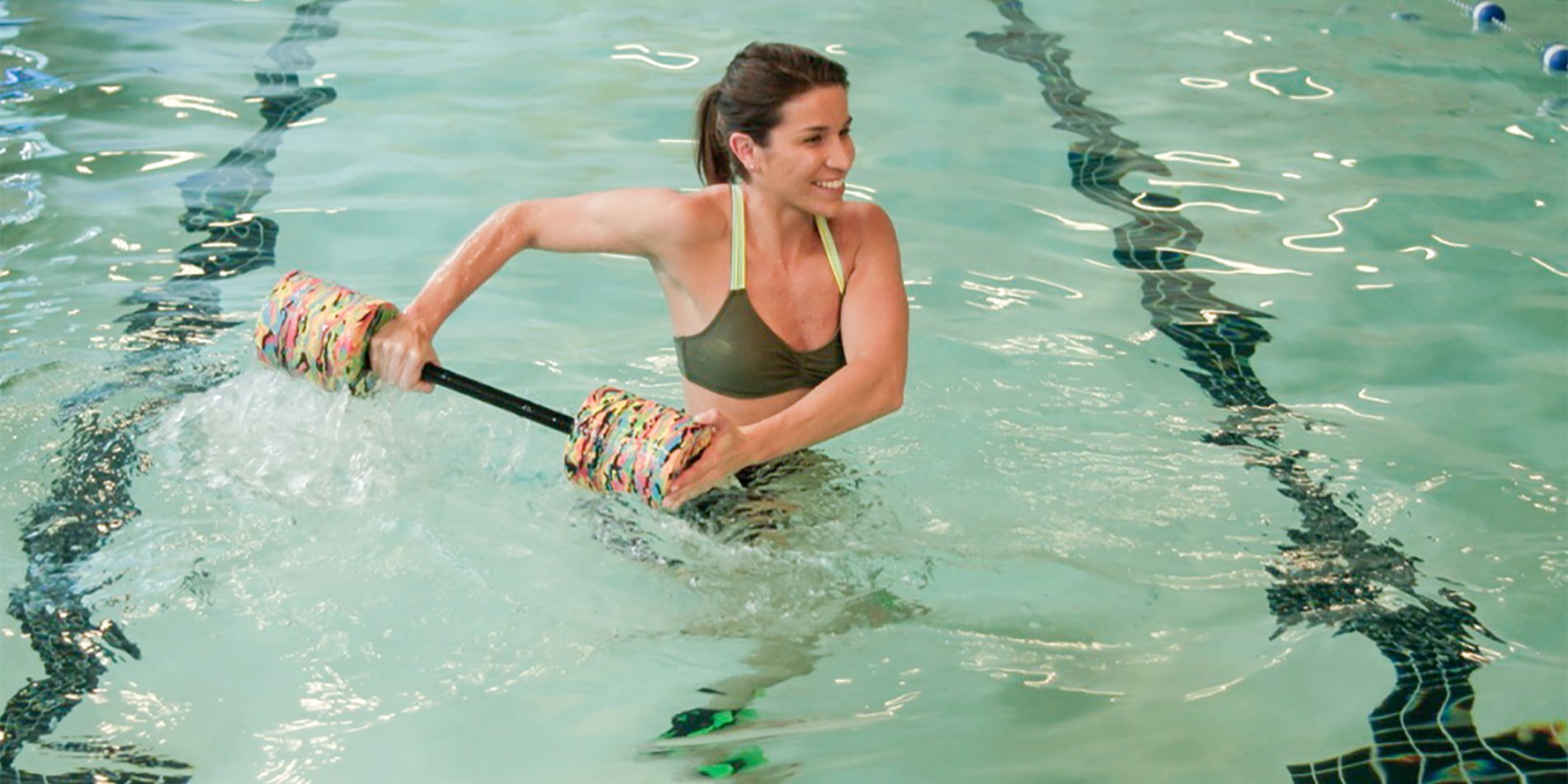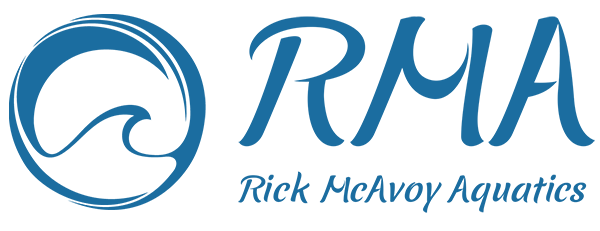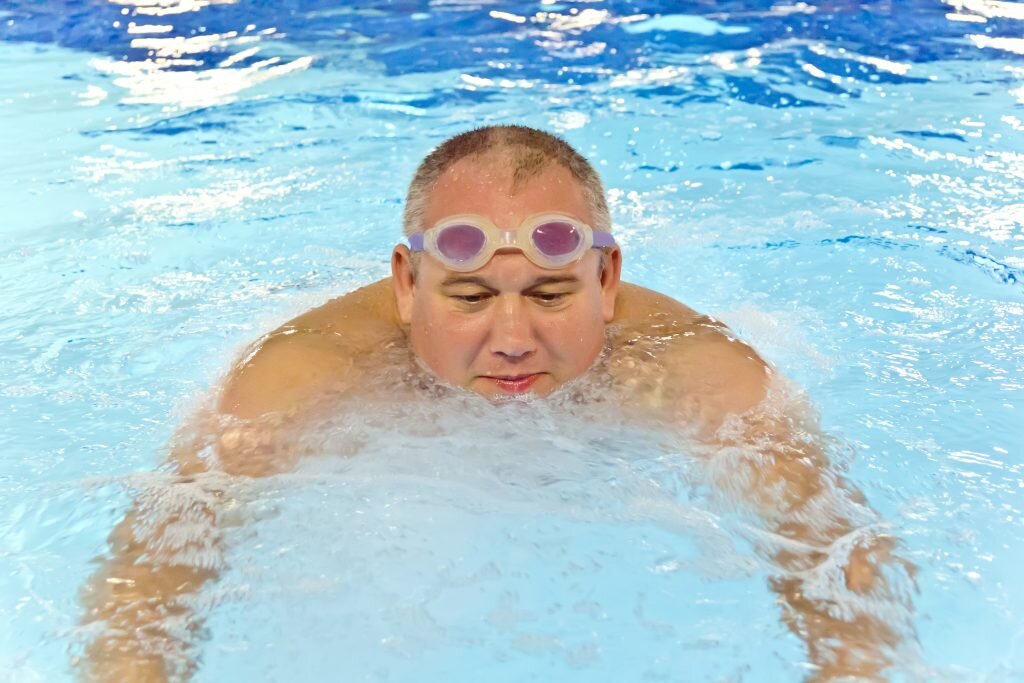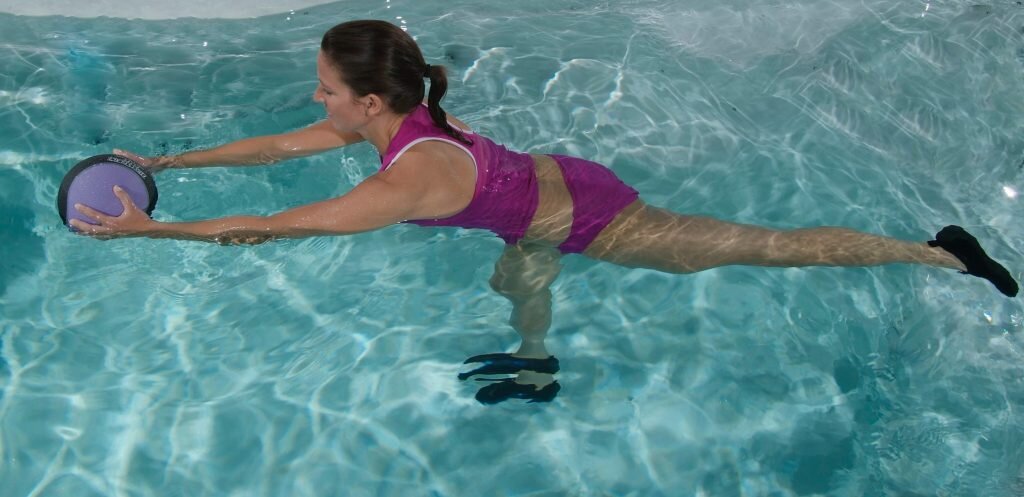
BLOG
Arthritis Pain Relief in Your Swim Spa
Not Just Your Grandma’s Arthritis
Osteoarthritis (OA) is the most common form of arthritis. There's a 50-50 chance that at some point in your life, you are going to develop osteoarthritis. I would not buy a lottery ticket with those odds!
In OA the strong, flexible substance that cushions your joints called cartilage begins to break down, leading to symptoms such as pain, stiffness, swelling particularly in the joints of the knee, hip, spine, hands and feet. Even though the cause of OA is unknown, age, gender, excess body weight, previous joint injury, occupation and genetics are all contributing factors.
Over the past decade knee replacement surgeries have tripled in the 45-to-64 age group because of OA.
One of the most effective ways to treat OA is to exercise. Your swim spa is one of the most comfortable and effective places a person with arthritis can exercise. Here’s why:
Water significantly reduces the impact on your joints making it much easier to move.
Water allows improved joint flexibility, which will improve range of motion and general mobility.
Water provides up to 12-15 times the resistance of air, allowing you to really strengthen your muscles and bones.
Your swim spas warm water and jets will aide in reducing any pain associated with OA.
Your spas current or jetted system can assist to improve cardiovascular fitness, calorie burning and weight loss.
The water 3 dimensional surrounding properties can help improve your balance, coordination and walking mechanics which then can transfer to land.
Your swim spa obviously provides significant benefits from a low impact standpoint. However, it is also a great place to get a high intensity workout.
A recent study with patients who suffered from OA and participated in a 6 week high intensity aquatic workout reduced joint pain and improved balance, function, and their overall mobility
Your swim spa can help to significantly alleviate and improve the symptoms associated with Osteoarthritis.
It is not necessarily the Fountain of Youth, but it’s pretty close.
.
Dr. Rick McAvoy, PT, DPT, CSCS has specialized in Aquatic Physical Therapy, Fitness and Sports Performance for over 25 years. Rick is the Owner of Swim Spa Exercise, a virtual training company to help people maximize the use of their swim spas. He wants everyone to Move Better and Live Better.
For more information of how to maximize the use of your Swim Spa and how to Move Better and Live Better visit.
Weight Loss Using Your Swim Spa
As you are probably aware, obesity is a major issue in the world today. A significant number of people struggle with weight management. Trying to improve physical activity and diet is a constant battle for many.
An increase in body weight coupled with a sedentary lifestyle will often lead to greater health risks as well.
Regular exercise with a balanced diet can help you control your weight, reduce your risk of heart disease and certain cancers, and strengthen your bones and muscles. Not to mention improve your overall mood and sense of well being.
Taking your workout into your swim spa can easily help start you on your weight loss journey. Exercising in the water has been shown to be a great calorie burner and no matter what age, weight, or fitness level, anyone can perform and benefit from water exercise.
Here’s a few more reasons why your swim spa should be the place to begin your weight loss journey.
Water Training is Low Impact: The waters buoyancy allows for reduced impact on your joints. In fact, when standing in waist-deep water, you only weigh approximately 50% of your body weight.
This reduced weight bearing is one of the many advantages of exercising in water, it allows people to perform activities that are not always possible on land such as jogging.
A study in the Journal of Obesity looked at the effects of aqua jogging in obese adults and concluded that subjects who performed jogging in the water had reduced their body fat and waist size, and improved their overall aerobic fitness and quality of life.
More Flexibility/Less Soreness: Warm water will help to improve the flexibility of those tight muscles that you have developed over the years. With less gravity there is less risk of muscle soreness which will increase your exercise tolerance. In the water you are able to exercise everyday without increased muscle soreness.
Water Provides Accommodating Resistance: I like to refer to the water as “The Great Equalizer” meaning the harder you push against the water, the harder the water pushes you back. So no matter what fitness level you are, you control the amount of resistance which is a very safe and effective way to train. This forces your muscles to work harder, helping you burn fat and tone muscles more quickly than land-based exercise programs.
Burn Calories: Because of the added resistance in the water, you’re actually working harder than you would on land to complete the same exact movements, even if it doesn’t feel like that.
Research studies that compared upper and lower body workouts performed on land versus in the water, showed that exercises performed in water created a higher energy output than on land. These studies also explained the benefits of water exercise where both the upper and lower body movements were combined in the water, utilizing full body movements thereby expending more energy and burning more calories.
Exercising in warm water also increases your body temperature and burns even more calories during your workout.
Vertical aquatic exercise depending on your intensity has been shown to burn up to 400-600 calories in an hour!
It’s Fun: Exercising in the water does not really feel like you are exercising. You can’t feel yourself sweating and mentally you leave the water in a much better mood than when you got in. If an activity is fun people usually tend to stick with it
It’s Convenient: There are a significant number of people who are very intimidated to join a gym never mind the feeling of putting on a bathing suit in public! It has been shown that over half of people who join a gym do not attend consistently. Exercising in your swim spa in the privacy of your own home will make things so much easier and your weight loss goals more attainable.
Exercise is Medicine
In 2007, the American College of Sports Medicine (ACSM) and the American Medical Association (AMA) co-launched Exercise is Medicine
The goal of this organization is to create a broad awareness that exercise can be as powerful as any pharmaceuticals in preventing and treating a range of chronic diseases and medical conditions.
As a health care professional for over 30 years specializing in aquatics I couldn’t agree more that Swim Spa Exercise is Medicine!
Dr. Rick McAvoy, PT, DPT, CSCS has specialized in Aquatic Physical Therapy, Fitness and Sports Performance for over 25 years. Rick is the Owner of Swim Spa Exercise, a virtual training company to help people maximize the use of their swim spas. He wants everyone to Move Better and Live Better.
For more information of how to maximize the use of your Swim Spa and how to Move Better and Live Better visit.
10 REASONS TO EXERCISE IN YOUR SWIM SPA
A Swim Spa is a significant financial investment but should also be an investment in your health. Here are some of the benefits that the water can provide that will give you a significant return on that investment.
Water Training is Low Impact: The decreased weight bearing that buoyancy provides decreases the impact on your joints. Whether you are suffering from arthritis, recovering from and injury or just beginning an exercise program the water is a great place to train.
Water Provides Accommodating Resistance: The harder you push the water, the harder the water pushes you back. So no matter what fitness level you are ,you control the amount of resistance which is a very safe and effective way to train. By incorporating the current or jets of your swim spa you can create more of a strength challenge.
Improved Flexibility: The waters unique properties of buoyancy, viscosity and drag allows your muscles and joints to move much more freely than on land. This freedom of movement can help you gain improved flexibility.
Lose Weight: Because of the added resistance in the water, you’re actually working harder than you would on land to complete the same movement, even if it doesn’t feel like that. Water exercise can effectively burn more calories than land exercise when doing the same movements.Vertical aquatic exercise depending on your intensity you can burn up to 400-500 calories in an hour!
Builds Cardio Endurance: Waters unique properties provides increased resistance to movement and challenges you even further when exercising. When you pair this with your spas current or jets with activities such as running or jogging in the water, you get improved cardiovascular endurance.
Improves Balance: Exercising in the water can help to minimize the fear and risk of falling. Use the water to challenge your balance and coordination in a very safe and supportive environment. Integrate the swim current or jets in your swim spa for more of a challenge.
Cross Training: Water workouts are a great addition to your current training program. In the water it is much easier to balance your muscle groups. This will help to improved your land based training. It has been shown that individuals who do multiple forms of exercise may decrease their risk of overuse injuries.
Improve Recovery: If you are recovering from an injury or surgery, water training can allow you to get moving sooner and more comfortably. When combined with land based training results usually occur faster.
Functional: Functional exercise takes into consideration how our bodies move in day to day activities. Because water is a surrounding medium the resistance created while moving in the water works your whole body including your arms, back and core which is very functional.Unlike exercise machines, water provides resistance to movement in any direction which is very beneficial.
It’s Fun: Exercising in the water does not really feel like you are exercising. You can’t feel yourself sweating and mentally you leave the water in a much better mood than when you got in. If an activity is fun people usually tend to stick with it.
By maximizing the use of your swim spa it will provide significant health benefits for years to come.
Dr. Rick McAvoy, PT, DPT, CSCS has specialized in Aquatic Physical Therapy, Fitness and Sports Performance for over 25 years. Rick is the Owner of Swim Spa Exercise, a virtual training company to help people maximize the use of their swim spas. He wants everyone to Move Better and Live Better.
For more information of how to maximize the use of your Swim Spa and how to Move Better and Live Better visit.
5 Common Compensations when Incorporating Upper Body Drag Equipment
When integrating drag equipment into your clients routine there are common compensations that become evident and can be corrected with proper cueing.
Grip: Most clients will tend to grip the handles of the gear too tight. This will cause increase wrist and forearm discomfort when exercising. You may also note that their wrist position is not neutral but will flex and extend as they move. A cue would be “Try to keep your wrists straight but your grip loose as you move”
Posture: Most people myself included don’t have the best posture. Because we are very patterned individuals and tend to sit too much we develop that typical forward head and rounded shoulder posture. When using resistive gear in the water this can become further accentuated because the waters buoyancy and resistance act on the body simultaneously. Cueing for a proper chin tuck with a chest lift will cause facilitation of the lower trapezius musculature which will help with proper postural alignment
Core Stability: Incorporating upper body resistive equipment significantly challenges core stability. If the proximal stability of the core lacks control then the distal mobility of the extremities will cause increased compensation. One common compensation is that the body will rock back and forth with upper body movements. To correct this there are a few options. Remove the equipment so that proper alignment can be maintained during the exercise then gradually reintroduce. You can also slow the movement down enough so that proper core stability can be maintained and controlled.
Limited Range of Motion: When clients are cued to perform exercises at an increased speed we usually notice a reduced ROM .This happens because the client is try to go at a faster rate so they limit the motion to increase the speed of the exercise. Only have the client move as fast as they can with full equal motion.
Pattern: Common substitution patterns that I notice frequently are increased upper trapezius activation, this is demonstrated by the client shoulders being significantly elevated during exercise.
Pattern dominance is exhibited when a client is performing an exercise such as a push/pull exercise. A client will very often push out much more forcefully with the dominant anterior musculature and pull back with less force with the weaker posterior chain musculature.
When incorporating upper body resistive equipment I recommend what I call the 3 P’s: Pattern, Posture, Power.
First, teach the Pattern, Second cue for the Posture and Third integrate Power into the Movement.
Train in 3D, No glasses required
3-dimensional functional training has always been a major focus of mine. As a physical therapist I have to develop functional training programs for clients who need to return to work, sport and overall quality of life.
My education in 3D functional training came early while I was attending the University of Connecticut. One of my professors there was David Tiberio who together with Gary Gray are pioneers in the field of functional training. Both Gary and David offer functional training education though the Gray Institute.
The Certification in Applied Functional Science is a great course through the Gray Institute that I highly recommend to anyone especially those specializing in aquatics. It will help to maximize the use of the water with your clients or athletes.
Why is 3D training important?
As Gary Gray explains human beings are three-dimensional: “We’re capable of moving in three planes of motion — forward and back, side to side, and rotationally. But it goes further than that: We’re also muscles, bones, and nerves. We can express strength, endurance, and power. And we’re mind, body, and spirit. If we leave any of those dimensions out, then we’re not training the whole person.”
We are very patterned individuals. We tend to sit too much during the day and most times if and when we exercise we incorporate straight plane type movements. This tends to lead to muscle imbalance, joint dysfunction and hence injury.
By incorporating the water, functional gains can be made faster incorporating 3D training because:
Water provides three-dimensional resistance inherently, so the muscular and neurological systems receive a more comprehensive training effect than land.
In the water, the focus can be on both flexibility and strength/stability at the same time. This will assist in reducing muscle imbalances and improving posture and function on land.
The ability to target movements not just muscles. Because of the waters surrounding properties clients and athletes are able to train functional movement patterns easier than on land
One of the most important things that I think the water provides is the benefits to train the nervous system.
Muscle imbalances can cause increased inhibition which leads to increased apprehension. By decreasing muscle inhibition it will lead to decreased apprehension and produce cleaner movements.
Because water is a surrounding proprioceptively enriched medium, it provides increased kinesthetic feedback. This feedback helps to clean up dysfunctional movement patterns.
So the next time you are training clients in the water, try to remember and incorporate a 3D philosophy. For example, can the client perform an exercise in which the arms are moving in one plane while the legs are moving in another? I think you will find it challenging as well as beneficial for your client or athletes.


















